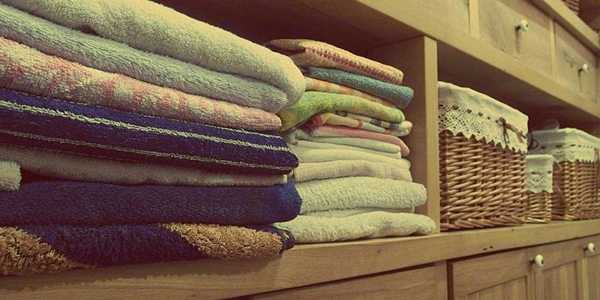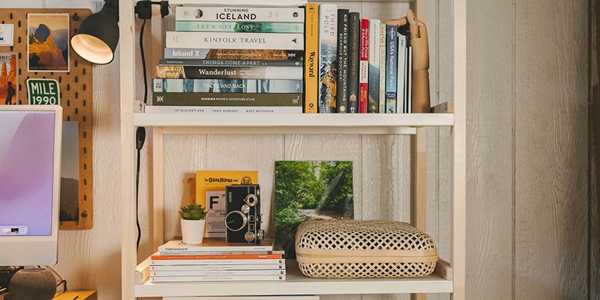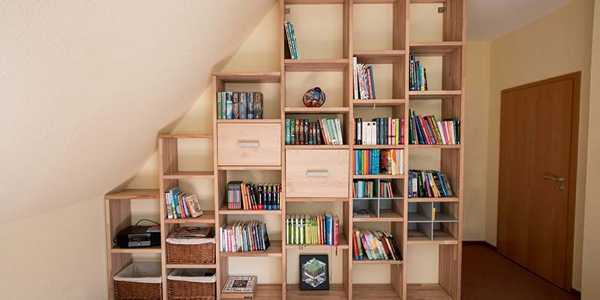How to Organize a Small Space: A Definitive Guide
The single best strategy for organizing a small space is to adopt a "less is more" mindset first, then maximize every inch of vertical and hidden space with multi-functional solutions. It's not just about buying bins; it's about a fundamental shift in how you view your belongings and your home. This guide will walk you through everything from the crucial decluttering phase to clever storage ideas for small apartments, ensuring you have a clear, actionable plan.
Living in a small space doesn't have to feel cramped. With over 20 years of helping people reclaim their homes, I've seen firsthand how the right approach can transform even the tiniest studio into a functional, peaceful oasis. We'll dive deep into choosing the right furniture, mastering room-by-room organization, and avoiding common pitfalls. My goal is to give you the confidence and the tools to create a space you truly love living in.

The Foundational Mindset: Before You Buy a Single Bin
Before we even talk about storage containers or shelving, we need to address the most important part of the equation: your stuff. You can't organize clutter. The most effective organization begins with a thoughtful and sometimes tough process of decluttering. This is the foundation upon which everything else is built.
What is the very first step to organizing a small space?
The absolute first step is to change your perspective. Stop thinking about what to get rid of and start thinking about what you truly want to *keep*. Frame it this way: "Does this item earn its spot in my valuable, limited space?" This simple mental shift from a mindset of loss (getting rid of things) to one of curation (choosing your favorites) is incredibly empowering.
Once you've adjusted your mindset, your first physical step is to define your goal for the space. How do you want it to feel? Calm? Creative? Energizing? Write it down. This vision will be your north star when you're faced with tough decisions about what stays and what goes.
How do I declutter a small room without getting overwhelmed?
The key to avoiding overwhelm is to start small and be methodical. Don't try to tackle the entire apartment in one weekend. I've seen that lead to burnout and a bigger mess than when you started. Instead, use a focused approach.
- Pick One Small Area: Start with a single drawer, one shelf, or just the top of your nightstand. The goal is a quick, visible win to build momentum.
- The "Four-Box" Method: Get four boxes or bags and label them: Keep, Donate/Sell, Trash, and Relocate. Every item you pick up must go into one of these boxes. No exceptions.
- Set a Timer: Work in short bursts. A 15- or 25-minute timer is perfect. When it goes off, you can take a break or, if you're feeling motivated, set it again. This makes the task feel manageable.
- Deal With the Boxes Immediately: This is crucial. At the end of your session, put the "Keep" items back neatly, take the "Trash" out, and put the "Donate" box in your car. Move the "Relocate" items to their proper homes. Don't let them become new piles of clutter.
What is the "one in, one out" rule and does it work?
The "one in, one out" rule is a simple but powerful maintenance strategy. For every new item you bring into your home, a similar item must leave. Buy a new pair of jeans? An old pair gets donated. Get a new coffee mug? An old one goes.
And yes, it absolutely works for small spaces. It's the single best habit you can adopt to prevent clutter from creeping back in after your big organization project. It forces you to be a conscious consumer and constantly evaluate if a new purchase is a true upgrade or just an addition to the clutter. It turns organization from a one-time event into a sustainable lifestyle.
Smart Storage Solutions: Thinking Inside and Outside the Box
Once you've decluttered, it's time to find a smart, intentional home for everything you've decided to keep. In a small space, this means getting creative and using areas you might have previously overlooked. The goal is to maximize storage without adding visual bulk.
How can I use vertical space effectively?
Going vertical is the number one hack for small spaces. Your floor space is limited, but your wall space is a goldmine. Look up!
- Tall, Narrow Shelving: A tall, slender bookcase draws the eye upward and provides a huge amount of storage on a tiny footprint. Anchor it to the wall for safety.
- Wall-Mounted Shelves: Floating shelves are fantastic. You can install them above doorways, over your desk, or in a corner to hold books, plants, or decorative items without taking up any floor space.
- Over-the-Door Organizers: Don't forget the back of your doors! Over-the-door shoe organizers aren't just for shoes. They are perfect in the pantry for spices, in the bathroom for toiletries, or in the craft room for supplies.
- Pegboards: A pegboard system is incredibly versatile for a kitchen, office, or garage. You can customize it with shelves, hooks, and baskets to hold exactly what you need, and change it up as your needs evolve.
What are the best storage containers for small spaces?
The right containers can bring a sense of calm and order. For small spaces, I always recommend a cohesive approach.
Opt for clear or uniform containers. Clear bins let you see what's inside at a glance, reducing the need to pull everything down. If you prefer an opaque look, choose containers from the same family (same color and style) and use clear, easy-to-read labels. This creates a clean, uncluttered visual line, which makes the space feel bigger and more serene.
Here's a quick guide:
| Container Type | Best For | Pro Tip |
| Clear, Stackable Bins with Lids | Under-bed storage, closets (seasonal clothes, extra linens) | Measure your space first! Ensure they fit the height under your bed or on your shelf. |
| Woven Baskets | Living room (blankets, magazines), open shelves | They add warmth and texture, making storage part of your decor. |
| Drawer Dividers | Kitchen utensils, office supplies, socks and underwear | Adjustable bamboo or plastic dividers are a game-changer for "junk drawers". |
| Slim Rolling Carts | Kitchens (next to the fridge), bathrooms, craft areas | Utilizes awkward, narrow spaces and brings storage to you when you need it. |
What are some cheap or DIY storage hacks?
You don't need to spend a fortune to get organized. Some of the most effective solutions are things you can make or repurpose yourself.
- Tension Rods: Use a tension rod under your kitchen or bathroom sink to hang spray bottles, freeing up the entire cabinet floor. You can also use one vertically in a cabinet to "file" cutting boards and baking sheets.
- Wine Racks: A simple wall-mounted wine rack can be used to hold rolled-up towels in the bathroom or yarn in a craft room.
- Shoeboxes: Cover old shoeboxes with attractive contact paper or fabric to create custom, free storage bins for shelves and drawers. Use the lids, too!
- Magazine Files: Turn plastic or cardboard magazine files on their side in your pantry to store canned goods, or use them to hold your hair dryer and flat iron under the bathroom sink.

Furniture for Small Spaces: Your Secret Weapon
In a small home, every piece of furniture needs to work hard. Think of your furniture not just as individual items, but as part of a larger, integrated system. The right choices can add massive amounts of storage and functionality.
What kind of multi-functional furniture is best for a small apartment?
Multi-functional furniture is the holy grail of small-space living. You're looking for pieces that serve at least two purposes. Here are my top picks:
- Storage Ottoman: It's a footrest, extra seating, and a coffee table (with a tray on top), all while hiding blankets, games, or electronics inside.
- Lift-Top Coffee Table: This is my favorite for studio apartments. The top lifts up and toward you to become a comfortable dining table or a work desk, with hidden storage underneath.
- Sofa Bed or Daybed with Trundle: A quality sofa bed is essential if you ever have guests. A daybed with a pull-out trundle can serve as a couch and two twin beds, which is fantastic for a small guest room or office.
- Bed with Drawers Underneath: If your bed doesn't have built-in drawers, you're missing out on a huge storage opportunity. It's the perfect place for out-of-season clothing, shoes, and extra bedding.
Are expensive, custom storage solutions worth it?
This is a great question. The answer is: sometimes. If you have a particularly awkward space—like a slanted wall in an attic room or a very narrow alcove—a custom-built solution can be a fantastic investment. It can utilize every single inch in a way that off-the-shelf furniture simply can't.
However, for most standard small spaces, you can achieve 90% of the benefit for 20% of the cost by being clever with modular systems (like IKEA's KALLAX or PAX) and the other strategies we've discussed. My advice is to live in the space for a while first. Try the cheaper, more flexible solutions. If you still find a specific area is a persistent problem, then it might be time to consider a custom build as a long-term investment in your home's functionality.
Room-by-Room Tactical Guides
The principles of decluttering and maximizing space apply everywhere, but each room has its unique challenges and opportunities. Let's break it down with some quick, actionable tips.
What are the best ways to organize a tiny kitchen?
A tiny kitchen can be a joy to cook in if it's well-organized. The key is efficiency and accessibility.
- Edit Your Tools: Be ruthless. Do you really need three different kinds of spatulas? Keep only the best and most-used items.
- Use Cabinet Doors: Attach small racks to the inside of cabinet doors to hold spices, pot lids, or cutting boards.
- Install a Magnetic Knife Strip: This gets your bulky knife block off the counter and uses wall space safely and effectively.
- Add Under-Cabinet Shelves: These small wire shelves hook onto your existing shelf to instantly double the storage for plates, bowls, or mugs.
- Think in Zones: Keep all your coffee and tea supplies in one area. Store pots and pans near the stove. Group baking supplies together. This makes finding things intuitive and quick.
How do I organize a small bedroom for two people?
Sharing a small bedroom requires communication and smart compromises. The goal is to create two distinct, personal zones within a shared space.
- Individual Nightstands with Storage: Each person needs their own "landing strip." Choose nightstands with both a drawer and a shelf to hide clutter and keep essentials handy.
- Divide the Closet Fairly: Use a closet system or even just different colored hangers to clearly delineate each person's space. This little visual cue can prevent a lot of arguments.
- Go Under the Bed: This is non-negotiable for a shared room. Use divided under-bed containers so each person has their own designated storage for shoes, sweaters, or personal items.
- Wall-Mounted Sconces: Instead of bulky table lamps, install plug-in or hardwired wall sconces above the bed. This frees up the entire surface of your nightstands.

Can you provide a step-by-step plan for organizing a small closet?
Absolutely. A small closet can hold a surprising amount if you approach it strategically. Here's my proven 5-step process:
- Empty It Out. Completely. Take every single item out of the closet. This is the only way to see what you're working with and give it a good cleaning.
- Declutter and Categorize. Go through every piece of clothing. If it doesn't fit, is damaged, or you haven't worn it in a year, it's time for it to go. Group the remaining items into categories: pants, shirts, dresses, etc.
- Maximize the Space. Install a second rod to double your hanging space. Use slim, velvet hangers—they take up less room and prevent clothes from slipping. Add a hanging canvas organizer for sweaters or a shoe rack on the floor or door.
- Reload by Category. Put items back into the closet by category. I also like to arrange them by color within each category. It looks beautiful and makes finding specific items a breeze.
- Use the High Shelf Wisely. The top shelf is for less-frequently used items. Store out-of-season clothing or extra blankets in labeled bins.
Advanced Strategies: Making it Last & Look Bigger
Organization is one part of the puzzle. The other part is creating a space that not only functions well but also *feels* open, airy, and inviting. This involves long-term habits and a few clever visual tricks.
What are common organizing mistakes to avoid in a small home?
I see people make the same few mistakes over and over again. Avoiding them will put you way ahead of the game.
Here's a comparison of common mistakes versus better strategies:
| Common Mistake | Better Strategy |
| Buying storage containers before decluttering. | Declutter first, then buy only the storage you actually need for the items you're keeping. |
| Ignoring vertical space. | Actively look for ways to use walls with tall shelving, floating shelves, and pegboards. |
| Using bulky, dark furniture. | Choose "leggy" furniture (so you can see the floor underneath), light colors, and pieces with a smaller visual weight. |
| Forgetting about maintenance. | Adopt the "one in, one out" rule and schedule a quick 10-minute tidy-up session each day. |
| Trying to do it all at once. | Break the project down into small, manageable zones to avoid burnout and ensure completion. |
What colors and lighting make a small room look bigger?
This is where the magic happens! How you use color and light can dramatically change the perception of a space.
For Color: Light and neutral colors are your best friends. Whites, soft grays, pale blues, and beiges reflect light, making walls recede and the room feel more expansive. Try this pro tip: paint the walls, trim, and ceiling all the same light color. This blurs the lines where the walls end and the ceiling begins, creating an illusion of height and openness.
For Lighting: A single, central overhead light tends to create shadows in the corners and make a room feel smaller. The best approach is to use a layered lighting strategy:
- Ambient Lighting: Your main overhead light. Choose a flush-mount or semi-flush mount fixture that doesn't hang down too low.
- Task Lighting: Focused light for specific activities, like a reading lamp by a chair, under-cabinet lighting in the kitchen, or a desk lamp.
- Accent Lighting: This is what adds depth. Use a small uplight behind a plant or a picture light over a piece of art to draw the eye around the room.
Mirrors are also a form of "light." A large mirror placed opposite a window will bounce natural light all around the room, making it feel brighter and almost twice as large.
How do I maintain organization in a small space long-term?
Maintaining your newly organized space is all about building small, consistent habits. It's like fitness; you can't just go to the gym once.
- The "One-Minute" Rule: If a task takes less than a minute to do, do it immediately. Hang up your coat, put the mail away, wipe down the counter. These tiny actions prevent small messes from becoming big problems.
- Daily Reset: Spend 10 minutes before bed resetting your space. Put cushions back on the sofa, clear the coffee table, load the dishwasher. Waking up to a tidy space is a gift to your future self.
Conclusion
Organizing a small space is a journey, not a destination. It begins with the crucial mindset of curating your belongings, then moves into the practical application of maximizing vertical space, choosing multi-functional furniture, and implementing smart storage. By following these strategies, you can transform your home from a source of stress into a sanctuary of peace and functionality. Remember, the goal isn't perfection; it's progress. Start small, be consistent, and create a home that truly supports the life you want to live.
Found these tips helpful? Share them with a friend who is also on their organization journey!





